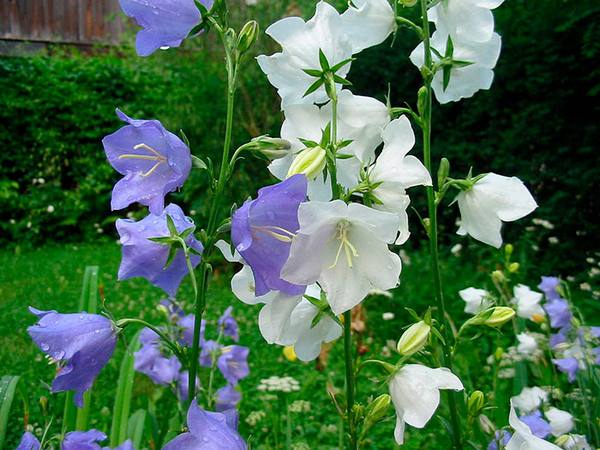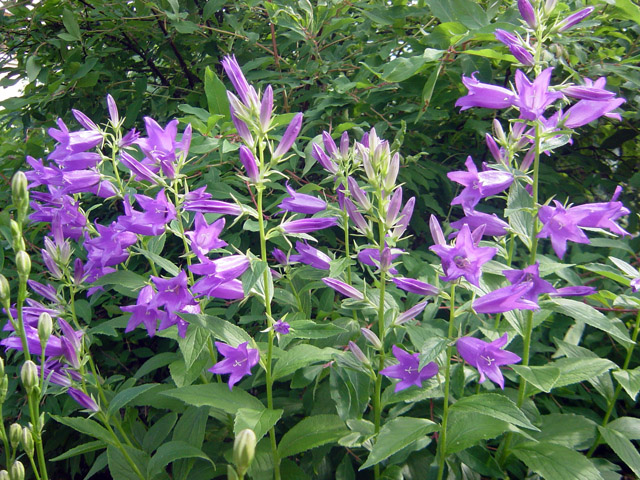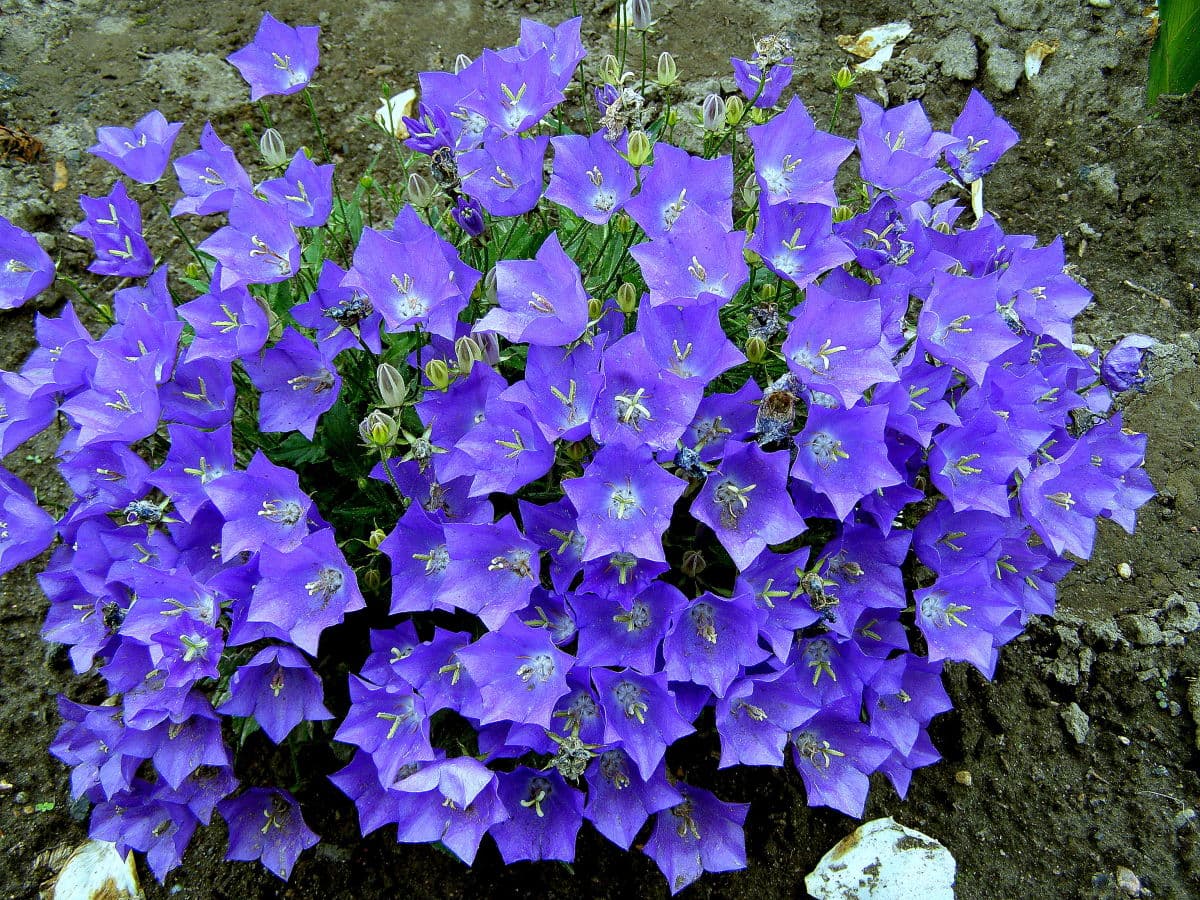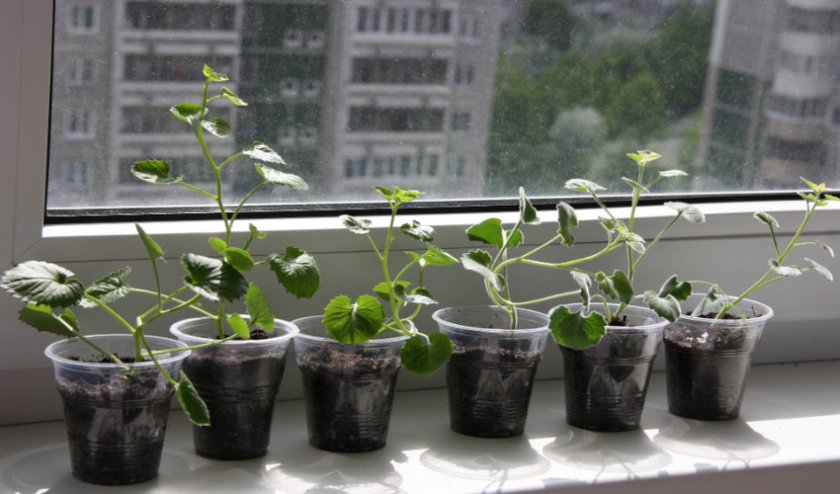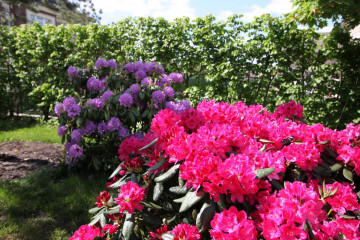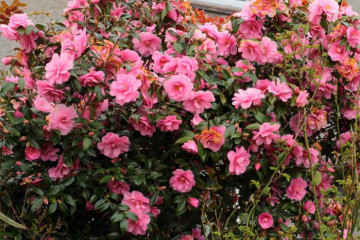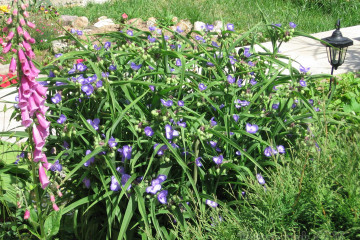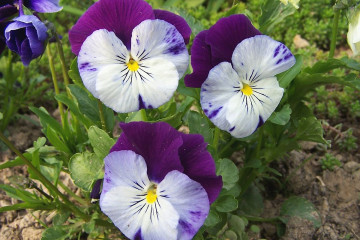Campanula garden perennial - planting and care
Perennial garden campanula is a flower from the Bellflower family from the Mediterranean. By the people, this attractive plant is considered to be a symbol of the family hearth and well-being, as well as personal happiness. For these reasons, a mix of campanula is often planted in the open field: two bushes of blue and snow-white color, symbolizing a man and a woman, a husband and a wife.
This flower coexists wonderfully in a wide variety of areas: in meadows, in forests, even in rocky areas. He firmly entered the life of flower growers, settling in agricultural. plots and apartments (on window sills and balconies).
Varieties
There are about three hundred species and varieties of campanula: perennials or annuals. The most common species that are easy to grow in all conditions:
- Carpathian (Carpatica);
- Terry;
- Equivalent;
- Blauranka (Pozharsky subspecies).
The Carpathian bell was first discovered in the mountains of the same name. It has rounded oblong leaves located closer to the ground. The color of the inflorescences is very diverse. Such a campanula in the open field blooms from the beginning to the end of summer.
Terry is a hybrid of the Carpathian and spoon-leaved campanul. The bush of a double flower is small, the stems are soft, thin, flexible. The bush is dotted with many "full" flowers, because of which the greenery of the plant is practically invisible.
The uniform-leaved campanula can reach a height of 30 cm. Its stems are flexible and long, the leaves are carved and grow on long cuttings. Under the weight of the flowers, the stems bend easily, so it is good to plant such a bush in a hanging planter: the plant is not constrained, spreads freely, and the "hat" of flowers is formed beautifully, delighting each of its owners with its decorativeness.
Campanula Blauranca is distinguished by its large leaves and flowers. The bush itself is undersized - no more than 20 cm. This kind happens only with flowers of a delicate blue color. This campanula can be planted on the street, it is picky and easily takes root in any of the areas, and it also feels good indoors.
Is it possible to plant in open ground
With the onset of warmth, the pots are placed outside (if the flower is grown as an annual), or the campanula is transplanted into the ground, it feels great in the fresh air.
What should be the soil
Street campanula loves peaty soil with an admixture of foliage. The advantage of such a substrate is that it loosens easily and allows a lot of air to penetrate to the roots.
A layer of drainage is laid out on the bottom, then a layer of fresh loose earth, then a plant with lumps of earth on the roots is placed in the center of the pot (hole). Do not wash the "old" ground - this will make it easier for the flower to adapt.At the end of the transplant, the remaining earth is poured, tamped lightly with your hands, and an earthen lump is watered.
Care features
Top dressing of perennial bells
Campanula is not capricious in choosing the right fertilizers. Any flower dressing will do. You need to use it in accordance with the instructions (only during periods of growth and flowering).
In rest mode (if the plant is moved indoors), the campanula does not need to be fertilized, this can only harm it.
Water for irrigation must be filtered, then settled and only at a warm temperature.
Loosening and weeding
Periodically, it is necessary to remove weeds from the area where domestic plants grow, with loosening the soil. This is especially important after long rains. Even if the option of growing in pots was chosen for the undersized species, the soil needs to be loosened so that there is no stagnation of moisture, which will lead to decay of the roots and other problems.
Location and lighting
Campanula loves an abundance of light, but diffused, not direct. Therefore, it must be planted in flower beds on the sunny side of the house under the cover plant. When growing in pots at lunchtime, it is necessary to remove the flower from the sun's rays.
When placing flower containers on a veranda or near gazebos, preference is given to special stands or shelves so that the light is scattered through curtains or decor.
Pruning and wintering
At the beginning of September, you need to bring the pots with the plant into the room, or cut off the shoots completely, then cover with peat. Perennial campanula, although it belongs to the winter-hardy species, does not tolerate the cold. Therefore, after winter, with poor cover, the plantings may be damaged, and the composition will need to be "repaired".
How to deal with pests and diseases
If the simple rules for caring for the campanula are not followed, she often suffers from fungal diseases. She is also not immune to ticks and scale insects. It is necessary to periodically carefully inspect the plant, look under the bells, because small insects are not immediately noticeable.
Special preparations will help get rid of any diseases and parasites: Healthy Earth, Biotlin, Tsvetolux.
Problems may arise during cultivation if the conditions of care were not followed, and natural factors influenced:
- The leaves of the plant turned yellow or became pale - this indicates that he does not like the place, the campanula needs to be rearranged;
- If the stems began to stretch and turn pale, this means that the flower does not have enough light, you need to find another place and transplant the plant to a lighter area;
- Sluggish leaves indicate over-watering - it needs to be reduced. If it is affected by rains, the soil must be loosened so that it dries out.
Reproduction methods
Campanula can multiply:
- cuttings;
- seeds;
- dividing the bush.
Growing a bell from seeds in the garden
Flower seeds are planted in the soil in early spring and sprayed with warm water. When three leaves appear, the plant is ready for picking, then (after 2-3 weeks) - transplanting to the main place of growth.
Propagation by cuttings and dividing the bush in the open field
The plant propagates by cuttings in the fall. It is necessary to cut off the shoot with a couple of leaves from the bottom of the plant, place it in a weak solution of potassium permanganate for 10 hours.During this time, weak little roots will appear, the shoot is placed in clean cool water. In the prepared ground, the shoot is planted to a depth of 3 cm and covered with cellophane. Spray the plant in such a greenhouse once a week with warm water until rooting is complete.
When transplanting, you can immediately divide a large bush into several plants. With a sharp knife, the rhizome is divided into separate parts, which are immediately planted in pots, watered, and fertilized in a week.
Campanula Carpathica in the garden is an unpretentious flower. It is worth giving the plant a little time and energy, and it will respond with a long and abundant flowering, pleasing to the eye. When growing campanula in the garden, planting and care does not create much trouble, the main task will be to find a place, to remember about pruning and shelter by winter.
